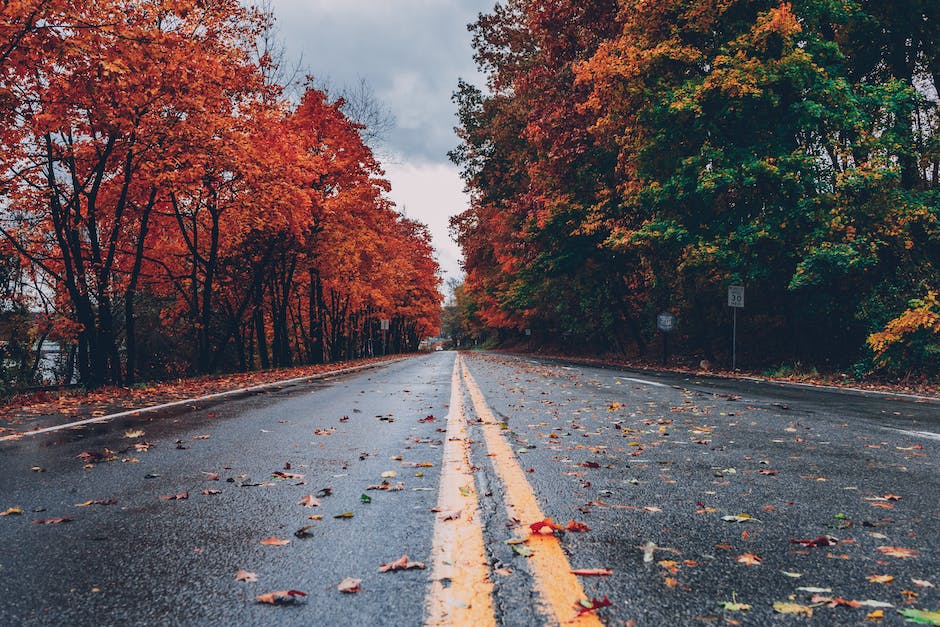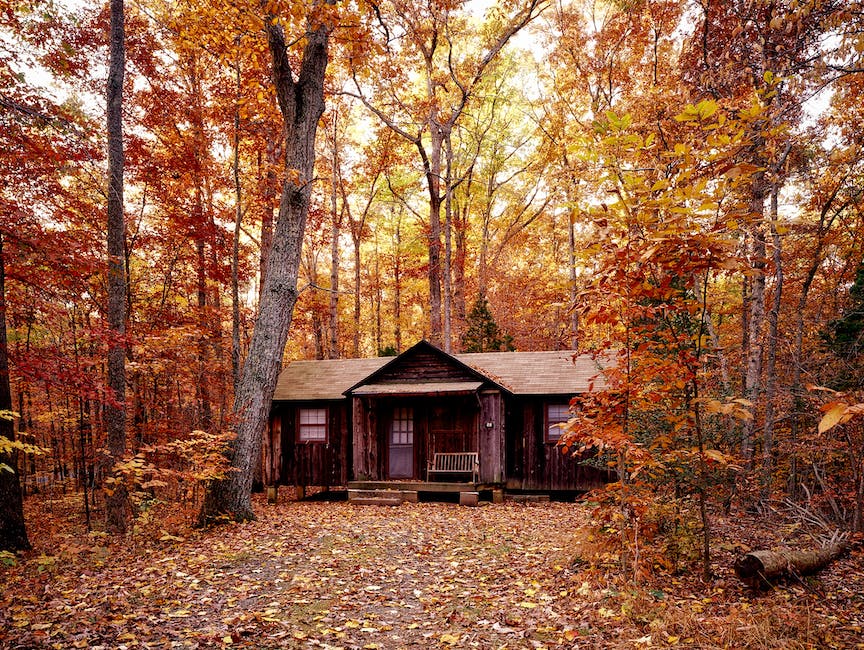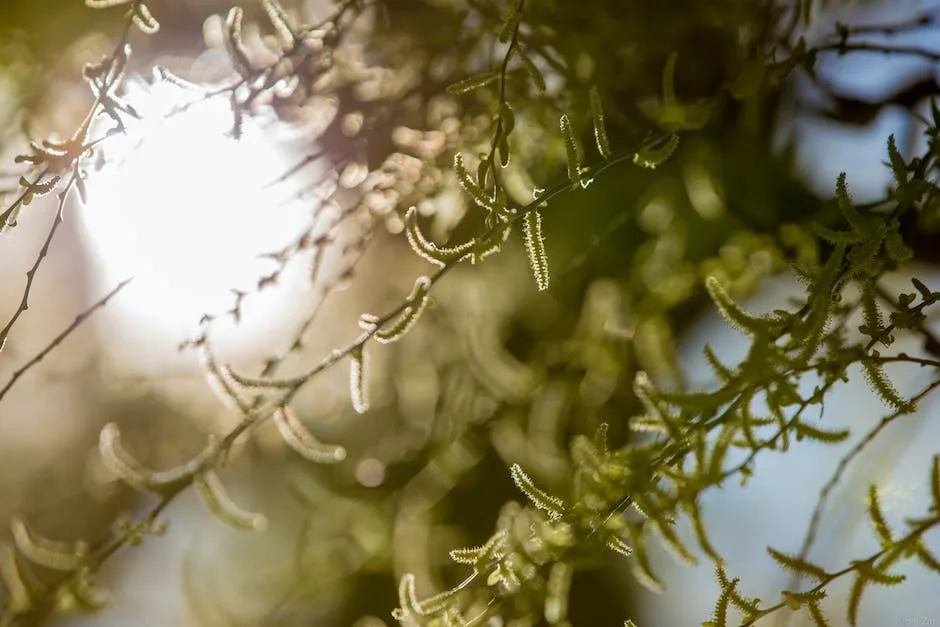Some people may be surprised to learn that they can be allergic to maple trees. Maple tree allergies are not as common as other tree allergies, but they can cause a range of symptoms including sneezing, runny nose, itchy eyes, and even asthma. Maple tree allergies are caused by the pollen from the trees, which can be released into the air in large quantities during the springtime. If you suspect that you may be allergic to maple trees, it is important to see an allergist for testing.
There are no documented cases of people being allergic to maple trees, but it is possible to be allergic to the tree’s pollen.
Do maple leaves cause allergies?
If you suffer from allergies, you may want to limit your exposure to maple trees. Because they are so prevalent, it can be difficult to avoid them altogether. However, you may be able to minimize your symptoms by staying indoors when the pollen count is high, wearing a mask when you go outside, and avoiding foods that can trigger oral allergy syndrome.
If you have a tree pollen allergy, you may experience the following symptoms:
-Runny nose
-Coughing and sneezing
-Nasal congestion
-Itchy nose, eyes, and/or roof of mouth
-Itchy throat
Do maple trees give off pollen
Maple flowers can produce large numbers of pollen grains, which can cause itchiness, scratching, or sneezing. If you are allergic to pollen, it is best to avoid these flowers.
If you suffer from allergies, you may want to avoid being around common plants and trees that are known to trigger allergies. Some of the most common offenders include birch, elm, cedar, oak, pine, poplar, and walnut trees. Ragweed is also a common culprit, especially in the fall when pollen levels are at their highest.
How common is a maple tree allergy?
If you’re allergic to maple trees, you’re not alone. Maple tree allergies are very common, and they can be difficult to single out as the source of your symptoms. Maple allergy season coincides with a variety of other tree allergy seasons, and it can also cross over into grass allergy season. If you’re struggling to pinpoint the source of your allergies, talk to your doctor or an allergist. They can help you identify your triggers and develop a plan to manage your symptoms.
Red maples (Acer rubrum) and their close relatives are the only known plants to produce a toxin that can oxidize hemoglobin. This results in the formation of Heinz bodies, methemoglobinemia and subsequent hemolytic anemia. Symptoms of toxicity include weakness, lethargy, exercise intolerance, cyanosis, and in severe cases, death. Fortunately, the toxin is not very stable and is easily degraded by cooking or other processing. Therefore, it is unlikely that people would be exposed to enough of the toxin to experience any adverse effects.
What is the most allergenic tree?
There are a few different types of tree pollen that are common allergens in the US. Pine trees, oak trees, juniper trees, and mulberry trees are all common sources of tree pollen allergies. Palm trees are also a common allergen, although they are not as common as the other types of trees. If you have any allergies to tree pollen, it is important to avoid exposure to these trees as much as possible.
If you suffer from allergies, it is important to be aware of the pollen count for your area. Pollen counts usually rise in the morning and reach their peak by midday or early afternoon. This is the time of day when allergies are often the worst, since there is a high concentration of pollen in the air. If possible, try to avoid being outdoors during the times when the pollen count is highest. If you must go outside, be sure to wear a mask and take allergy medication beforehand.
What is the most allergenic tree pollen
Pollen allergies can be tough to deal with, especially in the spring when trees are producing the most pollen. Some of the most common culprits for allergy symptoms are aspen, beech, birch, box elder, cedar, cottonwood, elm, and hickory trees. If you’re dealing with pollen allergies, make sure to take steps to avoid exposure to these trees and stay inside as much as possible during peak pollen times.
Tree pollen season is a time when many trees release pollen into the air. This can cause problems for people who have allergies to tree pollen. The Spring Maple pollen season is one of the longest and most severe tree pollen seasons. It extends from February to May. During this time, the pollen from maple trees is a dominant source of tree pollen in the air. This can cause a lot of problems for people with allergies.
What trees cause the least allergies?
There are a number of trees that are known to be beneficial for allergy sufferers. Some of the best trees for allergy sufferers include crabapple trees, crepe myrtle, dogwood trees, Eastern redbud, magnolia trees, pear tree, and tulip tree. These trees are known to produce less pollen and other allergens that can trigger allergy symptoms.
If you are allergic to birch tree pollen, it is best to avoid foods that may contain traces of it. This includes celery, hazelnuts, kiwi, peanuts, soybeans, and cucumbers. Additionally, it is also a good idea to avoid foods that are known to cross-react with birch tree pollen, such as parsley and potatoes.
When is maple tree allergy season
We’re entering pollen season, and tree pollen is common in the spring. Maple sycamores pollinate in spring to summer, depending on latitude and elevation.
Yes, allergies and colds have similar symptoms, such as a runny nose, sore throat, or sneezing, which can also make you feel sick. However, the cause of these symptoms differs between allergies and colds. You experience allergy symptoms when your immune system mistakes the environmental intervention and fights harmless particles like pollen or pet dander. In contrast, a cold is caused by a virus, and your immune system responds accordingly. Therefore, while the symptoms of allergies and colds may be similar, the cause and treatment differ.
What is the rarest thing to be allergic to?
Aquagenic urticaria is a rare allergy that causes painful hives and rashes when the person’s skin is exposed to water. This can happen regardless of the water temperature, and even when the water is purified.
If you develop a rash after touching a Christmas tree, it may be due to an allergy to a component of the tree’s sap. This irritating substance is called colophony or rosin, and it can cause a rash similar to one from poison ivy. If you think you may be allergic to colophony, be sure to consult with a healthcare professional.
How do you get rid of tree allergies
With the spring season comes warmer weather and blooming flowers, but for many people, it also means hay fever and allergies. If you’re one of the millions of Americans who suffer from seasonal allergies, here are a few tips to help you make it through the next few months.
First, start taking allergy medicines before tree and grass allergy season begins. This will help you to be proactive in managing your symptoms.
Next, check your local pollen count every day. This will give you an idea of how severe the allergies are in your area and whether it’s worth venturing outside.
If the pollen count is high, it’s best to stay indoors as much as possible. Keep windows closed and use CERTIFIED asthma & allergy friendly® air filters to help reduce the amount of pollen and other allergens in your home.
Another helpful tip is to wash your bedding in hot, soapy water weekly. This will help to remove any pollen or other allergens that may have collected on your sheets and pillowcases.
Finally, when you do go outside, be sure to wear sunglasses and a hat to protect your eyes and face from the pollen. And, when you come back inside, take your clothes off and put them
There are a number of over-the-counter remedies available for allergies. These include oral antihistamines, nasal sprays, and oral decongestants. All of these can help relieve symptoms like sneezing, itching, a stuffy or runny nose, and watery eyes. If you’re not sure which one to try, talk to your pharmacist or doctor.
Is tapping maple trees harmful
Tapping a tree does create a wound, but it is a wound from which the tree can readily recover and does not endanger the health of the tree. Commercial syrup producers are able to tap trees for decades without adversely affecting the health of the tree.
The antioxidants present in maple syrup can help to protect cells and reduce the effects of free radicals. Maple syrup is also a good source of several vitamins and minerals, including riboflavin, zinc, magnesium, calcium, and potassium. These nutrients are important for many bodily functions, including metabolism, immunity, and cell growth and repair. Therefore, including maple syrup as part of a healthy diet may offer some health benefits.
Is maple tree sap poisonous
If you are considering canning tree sap at home, be aware that the sap may have a pH level over 50. This means that there is a risk of botulism poisoning if the sap is not canned properly. It is best to consult with a professional before attempting to can tree sap at home.
A lot of people develop allergy symptoms because of certain trees, especially during the spring But why is this? The trees that trigger people’s allergies are usually the ones that are very fine and powdery The troublesome tree doesn’t have to be in your backyard to cause you trouble. If the wind blows the pollen from the tree, it can travel for miles and still cause a reaction.
Can tree allergies go away
Once a person has developed a pollen allergy, it is unlikely that the allergy will go away. However, the symptoms of the allergy can be treated with medications and allergy shots.
Poison ivy, poison oak, and poison sumac are all plants that can cause an itchy rash. These plants usually grow in wooded areas, so it’s important to know what they look like so you can avoid them. Wood nettle is another plant that can cause a rash, but it’s not as well known as the other three. This plant is found in shady, moist areas and has stinging hairs that can cause a painful rash.
What months is tree pollen highest
If you suffer from spring allergies, you’re not alone. Many people in the United States experience allergies from February to early summer, when tree pollination begins. Grass pollination usually begins later in spring and summer, and ragweed pollination typically occurs in late summer and fall. If you’re allergic to pollen, there are steps you can take to minimize your symptoms and make the spring allergy season more bearable.
Exercise is a great way to help reduce the symptoms of allergies. This is because it helps to increase blood flow and flush allergens out of the body more quickly. Additionally, stretching and warm-ups can help to further reduce symptoms.
Why do allergies get worse overnight
One of the biggest causes of nighttime allergies is dust mites – microscopic, spider-like bugs that feed on exfoliated human skin cells. These critters can be found in mattresses, pillows, bed linens, carpets and upholstered furniture. Dust mites won’t bite you or harm you, but their presence can cause a lot of discomfort for those who are allergic to them. If you suspect that dust mites are causing your nighttime allergies, there are a few things you can do to help alleviate the symptoms. first, try to keep your bedroom as dust-free as possible. This means regular vacuuming and dusting, as well as keeping clutter to a minimum. You should also wash your bed linens in hot water once a week to kill any dust mites that may be present. Finally, consider investing in an air purifier for your bedroom to help remove any airborne allergens.
Weed allergies are a problem for many people, especially during the spring and summer. Some of the most common weeds that can cause allergies include ragweed, pigweed, mugwort and amaranthus. If you are allergic to any of these weeds, it is important to avoid them as much as possible. Some trees, such as holoptelea, birch, cedar and oak, also produce highly allergenic pollen. If you are allergic to tree pollen, you should also avoid these trees.
Final Words
If you are allergic to maple trees, you may experience symptoms such as itching, swelling, and redness when you come into contact with the tree.
Yes, it is possible to be allergic to maple trees. Symptoms can include itching, swelling, and difficulty breathing. If you think you may be allergic to maple trees, it is important to see a doctor to get a diagnosis.
Jackson Hill is a passionate arborist with years of experience in the field of trees. He developed his fascination with trees at a young age, spending countless hours exploring the forests and climbing trees. Jackson went on to study arboriculture and horticulture at Michigan State University and later earned a degree in forestry from the University of Michigan.
With his extensive knowledge and expertise, Jackson has become a trusted authority on trees and their impact on the environment. His work has helped shape the field of arboriculture and he continues to be a leading voice in the industry.
